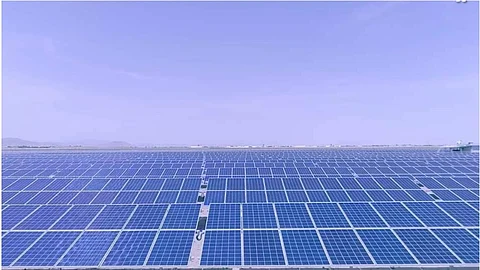

A 40 MW solar PV plant has entered construction in the Logar province of Afghanistan, capable of powering 40,000 homes
The solar power project is estimated to cost $28 million, with another $7.6 million required for a substation in Mohammad Agha Industrial Park
Taliban sees solar as vital for industry, jobs, and energy self-reliance as it tries to break free from import reliance
Afghanistan has laid the foundation stone of a 40 MW solar PV power generation project in Mohammad Agha District of Logar Province, according to the country’s state-owned utility Da Afghanistan Breshna Sherkat (DABS).
While the solar project will require investments worth $28 million, another $7.6 million is expected to be incurred for the construction of a 126 MVA substation in the Mohammad Agha Industrial Park.
The office of the Deputy Prime Minister for Economic Affairs (DPMEA) shared that the solar PV project is targeted to be completed within 18 months. It will provide clean electricity to 40,000 households in the region and resolve the electricity shortage in the industrial park.
Taliban government’s Deputy Prime Minister Mullah Baradar Akhund added that the 40 MW solar project will boost industrial activities in Logar and create numerous economic opportunities. He cites the lack of electricity supply in Afghanistan as one of the key reasons for the country’s underdevelopment, as it remains dependent on expensive imported electricity despite having vast energy generation resources.
Now, the country aims for energy self-sufficiency through efficient utilization of solar and wind energy, as well as ensuring proper water resource management. Afghanistan also aims to become an exporter of surplus electricity to the neighboring nations.
The construction of this project follows another 40 MW solar project in Balkh province that entered construction in May 2025 (see Afghanistan Starts Construction Of Balkh Solar Power Plant).
According to the country’s Renewable Energy Policy of 2015, available on the DABS website, Afghanistan’s total renewable energy potential stands at around 318 GW, with solar alone accounting for 222 GW, followed by wind with 67 GW, 23 GW of hydro, up to 3.5 GW of geothermal, and 4 GW of biomass capacity.
The country targets renewable energy capacity deployments of 4.5 GW to 5.0 GW by 2032. At the end of 2024, its total installed renewable energy capacity stood at 523 MW, including 54 MW of solar PV, according to the International Renewable Energy Agency (IRENA).
